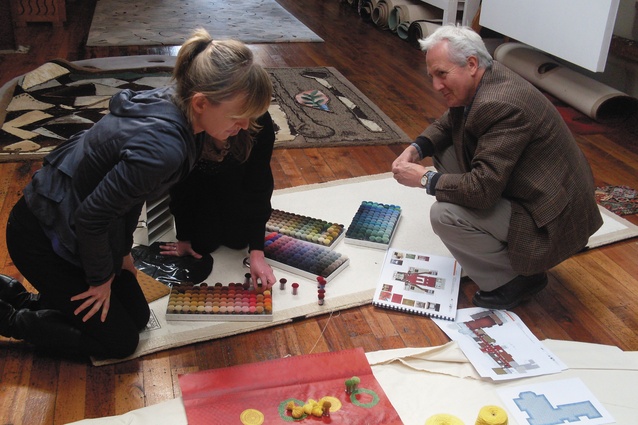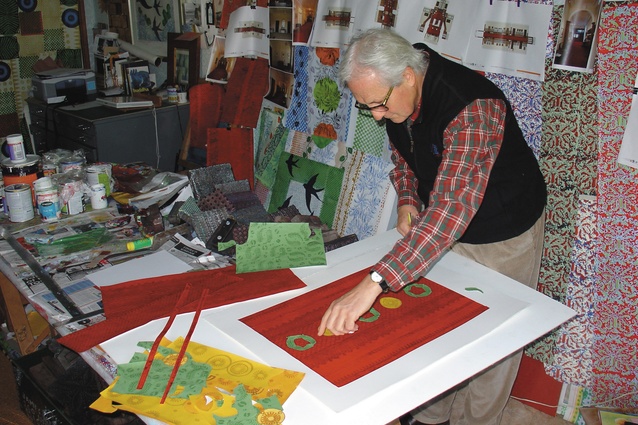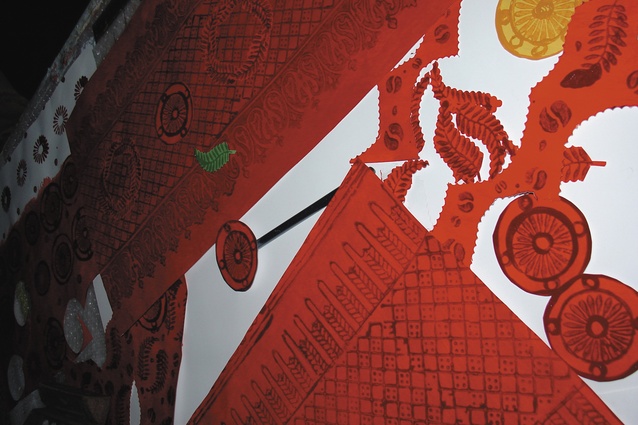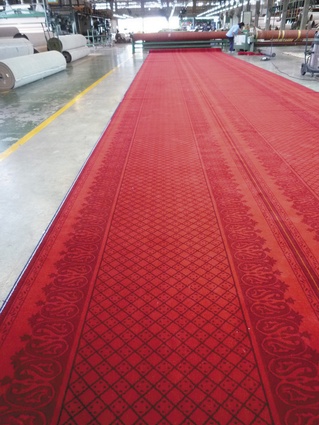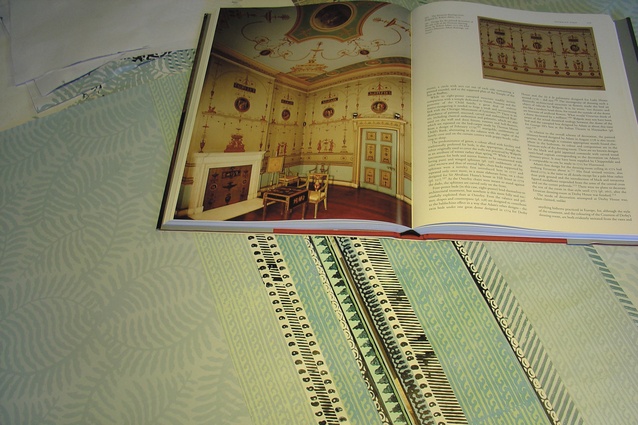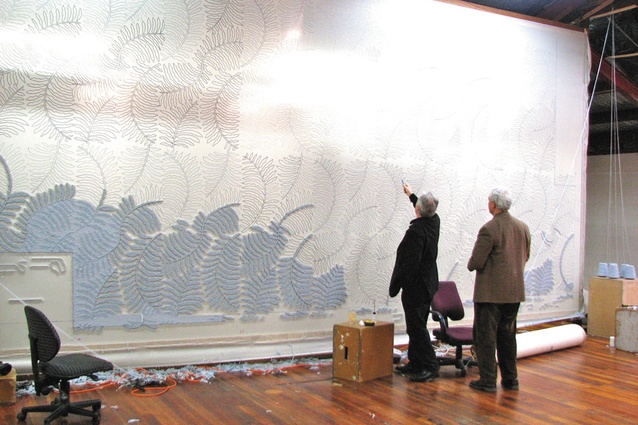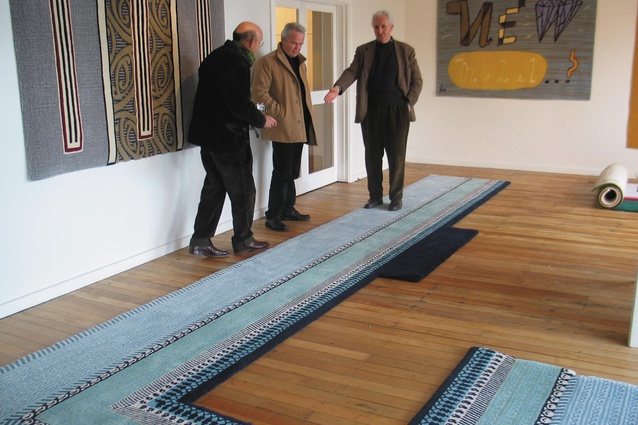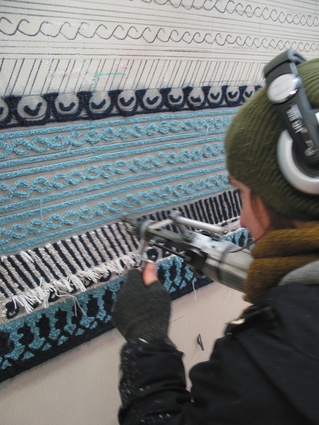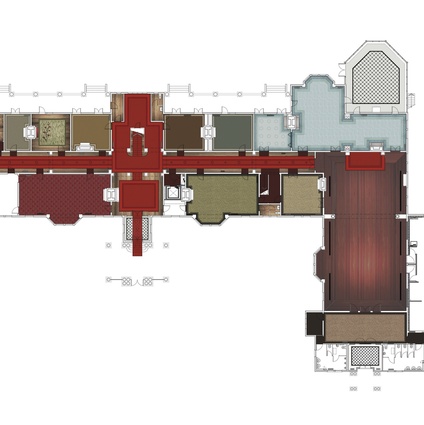A stitch in time
Artist Gavin Chilcott provides some notes on the process of designing two quite different carpets for Government House.
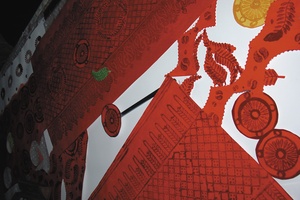
Foyer, stairs and hallways
The brief required two specific designs, one Axminster carpet for the entrance foyer, stairs and hallways (right) and a handmade deep-pile, fitted carpet for the main drawing room and the Monarch’s reception room adjoining it (below). The design of the foyer and hallway carpets reflects the pattern of the pressed hallway dado. My original concept included wreaths of green leaves and gold medallions throughout the carpet, of which the main colour required was red. The idea of these coloured motifs was to provide a sense of progression through the hallways and elevate the carpet. Unfortunately, in the final design process, these colours were eliminated; the compromise was to have them but woven in a darker tone of red. Identifying a suitable base red was the most challenging process. The remaining red tones were then created by blending colours at yarn construction keeping the base red consistent throughout the palette. This blending technique helped capture the essence of the original sketches. The Arts-and-Crafts architecture of the House dictated a sympathetic treatment for the Axminster carpets. With this in mind, I chose to use traditional hand-carved Indian wood blocks for all of the designs. I have been using these as a printing method in my own work for many years. Blocks I bought in Mysore were used for most of these carpets, many of them are from the early 1900s.
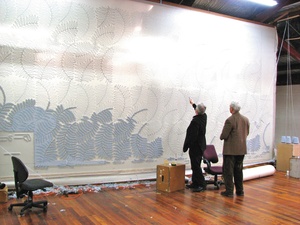
Porritt and Blundell rooms
My response to the grand spaces of the Porritt and Blundell Rooms was to retain in the carpet design some of the classical architectural detailing of the plasterwork on the ceiling and the carved-door detailing. With this in mind, I chose to concentrate the design into wide, detailed borders echoing the cornice of the room. The main body of the carpet is a silver fern motif. The colours chosen were inspired by a room designed in 1775 by Robert Adam, a long-time favourite interior architect of mine. The border in the adjoining smaller room is slightly different in scale and pattern. The width of the border has a relation to the volume of the room. It must also balance with the colour value and pattern scale of the central carpet it frames. I consider the handcrafted method of tufting to be a part of the design process, for it allows any imperfections to become elements in the carpet’s success rather than defects. The scale of the pattern is an important factor in allowing the rug makers the ability to freely express the design intention. Scaling from the initial sketch up to the production-ready scale often reveals design issues which require editing. However, this allows regular collaboration throughout the making process, and results in unique details, often abstract, which accentuate the beauty of the handcrafted product.

